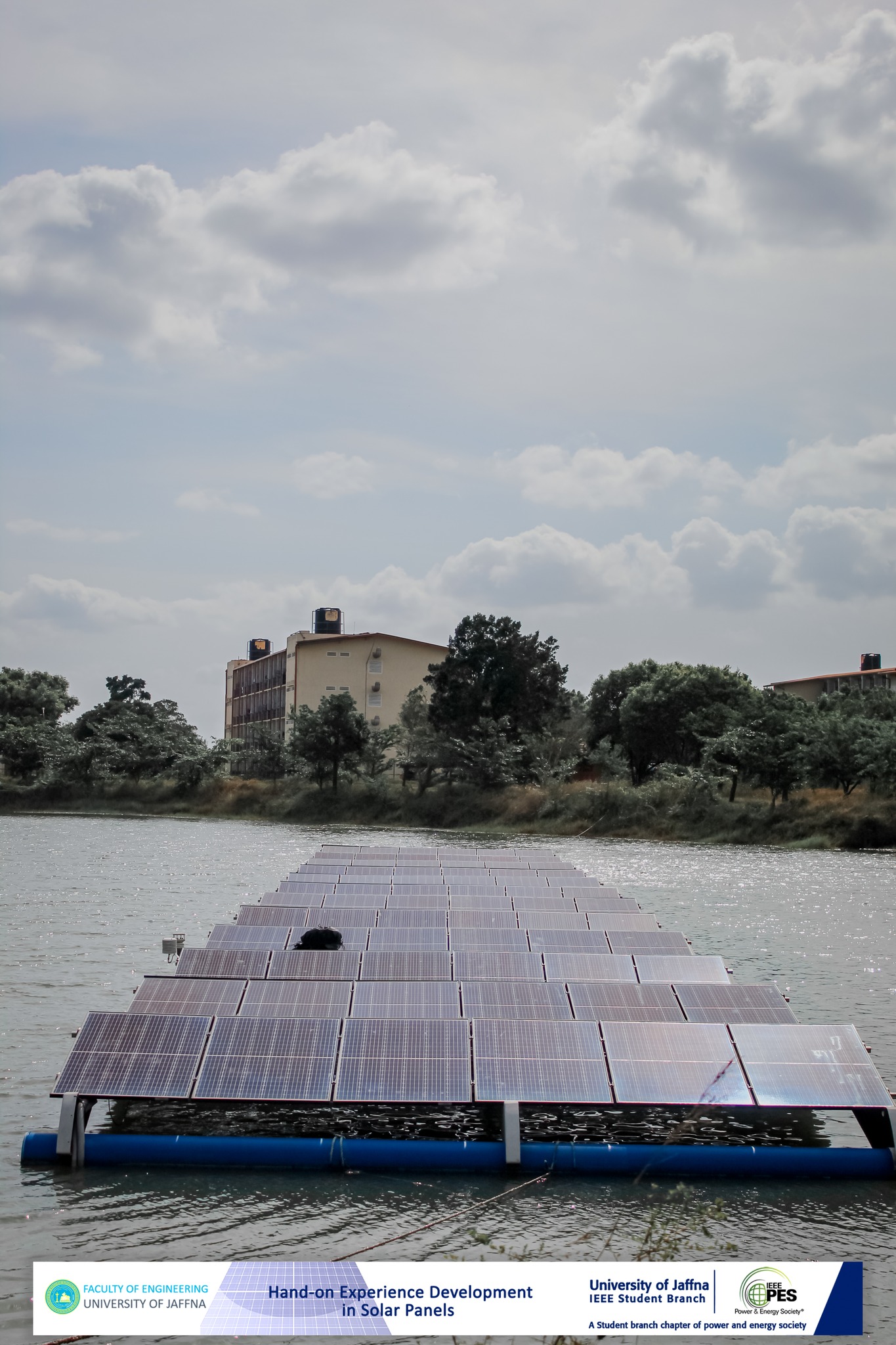Electricity Generations By floating Solar
INTRODUCTION
As per the predictions it is stated that by 2060 the fossil fuel resources around the world will be run out and this is one of the biggest issues that are discussed around the world from some time. The introduction of renewable energy to the generation of power paves a way to overcome this situation which is now widely used around the world from generation of electricity by power plants, in electric vehicles as well now it has introduced to toys too.
One of the main methods discussed is the power generation, is by solar panels which was introduced way back in 1980s which had faced and overcome many modifications up to date. Going through these different inventions floating solar panels had been introduced internationally by 2007 in Aichi , Japan which then rapidly grown among all continents which now said to be generate 2GW power worldwide.
FIRST FLOTING SOLAR PANEL IN SRI LANKA
Figuring out of the upcoming energy crisis in the near future ‘Engineering faculty of University of Jaffna which is situated Kilinochchi Premises’ had commenced a project on ‘Floating Solar panel’ which was declared open on January 24th, 2020 by the Norwegian Ambassador to Sri Lanka Trine Jøranli Eskeda. This system mounted at a depth of 2m on the pond and mainly consists of 157 Solar panel (77 Multi crystal silicon modules of 295Wp and 80 Mono crystal silicon modules of 315Wp). Addition to the it has 24 basic 8 – 12 kWh modules depending on the module type and size. There are also 4 modules: 2 Twin Peak and 2 N-peak. One Twin Peak and one N-peak module were mounted on the floating system, and one of each was placed on the land-based reference system. 50 kW SMA inverters used here, which contains 6 MPPT units and 5 MPPT is used in the design as the data is collected separately for different type of module and different orientation.1 MPPT is used for land-based PV system.
This was initiated with an idea and research collaboration by the Faculty of Engineering of University of Jaffna and Western Norway University of Applied Sciences (HVL) supported by the Royal Norwegian Embassy in Colombo where the total cost was estimated around LKR 10million. This can generate 4 – 5% more power yield (kWh/kWp) with compared to land-based projects. As per the calculations done the average cost per one unit is about 14.50 SLR where in simple calculation the manufacturing cost can be covered by around 11 years which shows how this kind of project can be beneficial in future for the University as well as for the arising power crisis among the public.
An economic crisis emerges around the world after 2021 due to the Corona pandemic, which the CEB had to hike up their cost of distribution. When compared to what was there before the crisis, the average cost for one bill has increased by 134% and this made major changes in the life each and everyone around the country. But as a University Kilinochchi Premises of University of Jaffna was able to counter this price hike where they were able to produce the needed electricity power using this solar panels which may benefit not only the University but also the country, as government spend a lot of money for facilitating the Universities around the country.
University is now underway to giving their knowledge for larger such projects which may be more beneficial in the future for the country. Also, the CEB and other parties who works within the electricity power generation industry in Sri Lanka get a kick out of to initiate such larger projects as they haven mentioned it in the Ceylon Electricity Board Long Term Generation plan 2022 to 2041, under section 3.4.4.5. Accordingly total of solar plant generation is expected to grow over 100MW installation in near future.
K.C.Arlaka Fernando
2021/E/081



